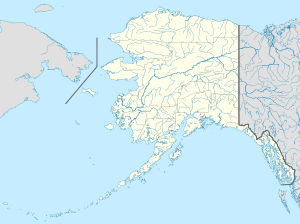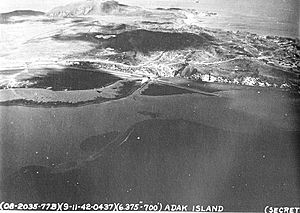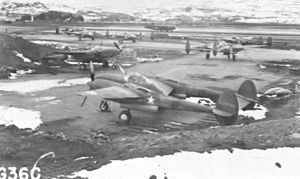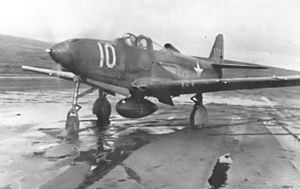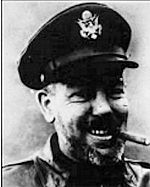Naval Air Facility Adak facts for kids
Quick facts for kids
Naval Air Facility Adak
Davis Air Force Base Adak Army Airfield (A-2) |
|||||||||||||||
|---|---|---|---|---|---|---|---|---|---|---|---|---|---|---|---|
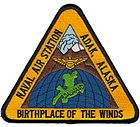 |
|||||||||||||||
| Summary | |||||||||||||||
| Airport type | Military | ||||||||||||||
| Owner | United States Navy | ||||||||||||||
| Location | Adak | ||||||||||||||
| Elevation AMSL | 18 ft / 5 m | ||||||||||||||
| Coordinates | 51°52′41″N 176°38′46″W / 51.87806°N 176.64611°W | ||||||||||||||
| Map | |||||||||||||||
| Runway | |||||||||||||||
|
|||||||||||||||
Naval Air Facility Adak (airport codes: ADK, PADK, ADK) was a United States Navy airport. It was located on Adak Island in Alaska, west of the town of Adak. This important base closed in 1997 but later reopened as Adak Airport. The facility is a National Historic Landmark because of its big role in World War II. However, most of its original buildings from that time are now gone or in ruins.
Contents
History of Adak's Airfields
Building Adak Army Airfield
In June 1942, during World War II, Japanese forces invaded and occupied two U.S. islands: Kiska and Attu. These islands are part of the Aleutian Islands in Alaska. This was the first time U.S. land was lost to a foreign enemy since the War of 1812.
U.S. commanders in Alaska worried that Japan would build airbases on these islands. Such bases could allow Japanese bombers to reach major cities on the U.S. West Coast. They also believed that if the U.S. took back the islands, they could use them as bases to attack Japan.
To fight back, the U.S. Army Air Forces decided to build a new airfield. This airfield, called Adak Army Airfield (code name A-2), was built on Adak Island. Work began on August 30, 1942. Soldiers landed during a storm. They had to quickly find a good spot for the airfield. They found a marshy area with a strong base of sand and gravel underneath.
Construction started on September 2. Workers built a dike around the marsh and dug drainage canals to remove water. Then, they scraped away the topsoil to get to the gravel. More gravel and a sand runway were added. By September 10, enough was built for a B-18 Bolo bomber to land. Soon after, a 5,000-foot runway made of metal planks was laid down.
By the end of September, Adak Army Airfield was home to many different planes. These included B-17 Flying Fortress bombers, P-38 Lightning fighters, and B-24 Liberator bombers. Construction continued quickly, adding asphalt to the runways and building more facilities.
Adak's Role in the Aleutian Campaign
By September 13, 1942, Adak was ready for combat operations. It was 400 miles closer to the Japanese forces on Kiska than the previous base. This shorter distance allowed U.S. planes to fly many missions each day, if the weather was good. Fighter planes could now easily reach enemy targets.
The first big combat mission from Adak happened on September 14, 1942. Thirteen B-24 Liberators and one B-17 Flying Fortress attacked Kiska harbor. They were supported by many fighter planes, including P-38 Lightnings, P-40 Warhawks, and P-39 Airacobras.
The attack was a surprise low-level sweep over the water. The P-39s first fired their cannons to stop anti-aircraft fire. Then, the P-40s attacked Japanese float planes. After the fighters, the heavy bombers dropped 1,000-pound bombs on the harbor. This raid greatly damaged Japanese facilities and ships. It made it hard for the Japanese to launch attacks from Kiska.
Attacks on Kiska continued strongly through late 1942. Japanese operations from Kiska were mostly just a few reconnaissance flights or small bombing missions that caused little damage. By late October, the Japanese decided to move most of their troops from Kiska to Attu, which they wanted to keep.
On January 12, 1943, American forces landed on Amchitka Island, which was 50 miles from Kiska. The Army began building another forward airfield there. Planes from Adak flew constant patrols over Amchitka to protect against Japanese attacks. By February 16, the runway at Amchitka was ready for light fighters.
With two airfields close to the Japanese, their position on Kiska became very difficult. U.S. forces from Amchitka and Adak bombed Kiska and Attu constantly. The Battle of Attu took place from May 11–30, 1943. Air support for this battle came mostly from Amchitka. The battle was very tough, with many Japanese defenders fighting until they were killed.
On August 15, 1943, U.S. forces landed on Kiska without a fight. The Japanese had secretly left the island because they knew they could not defend it. On August 24, 1943, the Aleutian Islands campaign was successfully finished.
After the Campaign
|
Adak Army Base and Adak Naval Operating Station
|
|
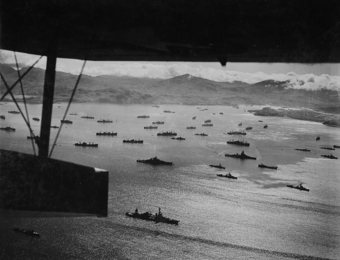
U.S. invasion fleet gathers in Adak Harbor for assault on Kiska in August 1943.
|
|
| Location | Adak Station, Alaska |
|---|---|
| Area | 46,700 acres (18,900 ha) |
| Built | 1942 |
| NRHP reference No. | 87000841 |
| Significant dates | |
| Added to NRHP | 27 February 1987 |
| Designated NHL | 27 February 1987 |
On September 10, 1943, Adak Army Airfield was renamed "Davis Army Airfield." This was done to honor Colonel Everett S. Davis, a brave officer who had died in a plane crash.
After the Japanese were removed from the Aleutians, the islands became less important for combat. New airfields were built on Attu and Shemya for long-range bomber attacks on the Kurile Islands in Japan. However, life on the Aleutian bases like Adak was tough. It was cold, damp, and there wasn't much to do. Soldiers often just waited for their time to be reassigned.
Davis Air Force Base
On December 18, 1945, Davis Army Airfield became part of the Alaskan Air Command. Its job was to defend the Aleutian Islands. The base had P-61 Black Widow night fighters to stop unknown aircraft. Later, these were replaced by new F-82H Twin Mustang planes.
However, in May 1949, the Air Force stopped operations at Davis due to a lack of staff. The base was put into a "caretaker" status, meaning only a few people stayed to look after it. On June 30, 1950, the Air Force officially closed the base.
On July 1, 1950, the Air Force gave Davis Air Force Base to the United States Navy. The Navy turned it into a base for fighting submarines. Adak became a key location for P-3 Orion patrol planes. These planes searched for submarines and watched naval ships, especially from the former Soviet Union. The base was also used as a stop for U-2 spy planes. By the 1980s, over 6,000 Navy people lived on the islands.
When the Soviet Union broke apart in the early 1990s, Adak's importance as a military base decreased. In the mid-1990s, the government decided to close military flight operations there.
On March 31, 1997, the Navy officially closed Naval Air Facility Adak. This ended a long period of military activity that began in 1942. The Navy left a small group of people to maintain the facilities, keep the runway open, and start cleaning up the environment.
The station was named a National Historic Landmark in 1987. This was because of its important role in World War II, even though most of the original buildings were already gone.
On December 1, 1962, a secret listening station called the Sound Surveillance System (SOSUS) opened at Adak. This system used underwater microphones to listen for submarines.
The Adak SOSUS system was very good at its job. It even detected highly secret U.S. submarines near a Soviet base. This showed how powerful the system was. In 1968, the Adak system also helped find the location of a lost Soviet submarine, the K-129. This information later led to a secret project to try and raise the submarine from the ocean floor.
When the Naval Air Facility closed, it also meant the end for NAVFAC Adak. It was the only SOSUS facility closed directly because of this program. The information from Adak's listening system was then sent to another Navy facility. NAVFAC Adak closed on September 30, 1992, after thirty years of important surveillance work.
Images for kids


